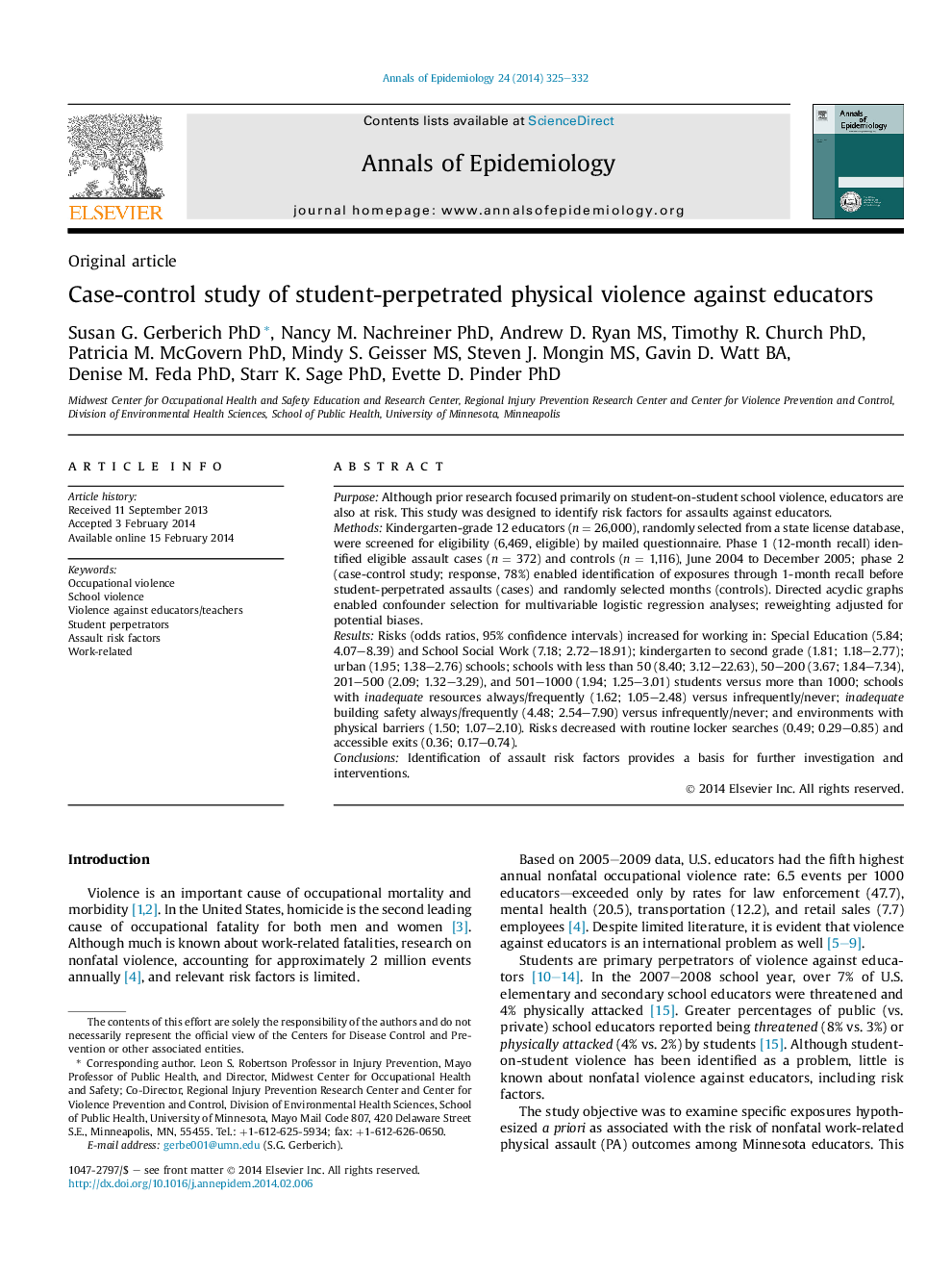| Article ID | Journal | Published Year | Pages | File Type |
|---|---|---|---|---|
| 3444405 | Annals of Epidemiology | 2014 | 8 Pages |
PurposeAlthough prior research focused primarily on student-on-student school violence, educators are also at risk. This study was designed to identify risk factors for assaults against educators.MethodsKindergarten-grade 12 educators (n = 26,000), randomly selected from a state license database, were screened for eligibility (6,469, eligible) by mailed questionnaire. Phase 1 (12-month recall) identified eligible assault cases (n = 372) and controls (n = 1,116), June 2004 to December 2005; phase 2 (case-control study; response, 78%) enabled identification of exposures through 1-month recall before student-perpetrated assaults (cases) and randomly selected months (controls). Directed acyclic graphs enabled confounder selection for multivariable logistic regression analyses; reweighting adjusted for potential biases.ResultsRisks (odds ratios, 95% confidence intervals) increased for working in: Special Education (5.84; 4.07–8.39) and School Social Work (7.18; 2.72–18.91); kindergarten to second grade (1.81; 1.18–2.77); urban (1.95; 1.38–2.76) schools; schools with less than 50 (8.40; 3.12–22.63), 50–200 (3.67; 1.84–7.34), 201–500 (2.09; 1.32–3.29), and 501–1000 (1.94; 1.25–3.01) students versus more than 1000; schools with inadequate resources always/frequently (1.62; 1.05–2.48) versus infrequently/never; inadequate building safety always/frequently (4.48; 2.54–7.90) versus infrequently/never; and environments with physical barriers (1.50; 1.07–2.10). Risks decreased with routine locker searches (0.49; 0.29–0.85) and accessible exits (0.36; 0.17–0.74).ConclusionsIdentification of assault risk factors provides a basis for further investigation and interventions.
